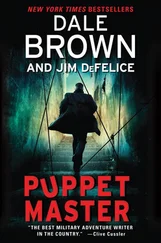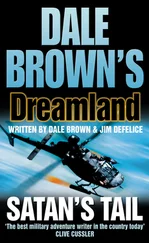“Sure,” Jason said. “What should we do first?”
“Let’s put away the robots and grab some coffee,” Kelsey said. “Everybody, take ten and then meet at the conference room.” She grabbed Bolton’s and Jefferson’s arms and took them with her on the way back to the conference room.
“Looks like the Fee-Bee has taken charge here, Jason,” Ari observed.
The meeting was already underway by the time Jason and Ari arrived at the conference room. “Lieutenant McCracken,” Kelsey was asking, “I assume you have some basic Table of Organization and Equipment documents we can use to get us started?”
“Of course, ma’am,” McCracken responded.
“Explain how it’s organized if you would.”
“Yes, ma’am,” McCracken responded. “The basic organization of every Marine unit, from the smallest platoon to the largest division, is the same: a command element, a support element, and one or more operations elements. A platoon is usually composed of a command element, a support element, two machine gun or mortar squads, and two security squads. Each squad is composed of four to eight Marines; the command and support elements have roughly the same number, depending on the mission, making each platoon number between twenty-four and forty-eight Marines.”
“Very good,” Kelsey said. “That’s about the same setup for an FBI field unit, so we’re already on the same page. I move that we adopt that Marine infantry platoon TO&E for our first Task Force TALON field unit, have the sergeant major get the men and equipment out here ASAP, and start training right away. We can tweak it as we get more intelligence information about our target; I can see that we would need some specialized nuclear-chemical-biological weapon detection, decontamination, and neutralization equipment, for example. Any thoughts?”
“Just one—we don’t need any of that stuff,” Jason said. “Two full-up CID units on one, preferably two, Humvee platforms are all we need. In about a month I can have all our weapons packs out here and have two CIDs trained and ready to go. Give me a C-130 and I can deploy anywhere in the western hemisphere in two days.”
“We’ve been through this already, Major,” Kelsey said, the exasperation evident in her voice. “We’re very impressed by CID, but we’d be wasting too much time learning how to use it and then learning how to employ it in the field. We’ve got the basic setup already drawn up and ready to go—no sense in reinventing the wheel here.”
“If it’s so logical, why do you think Sergeant Major Jefferson or Chamberlain didn’t already have a platoon out here waiting for us?”
“That’s argumentative, Major, and not very constructive,” Kelsey said pointedly. “Any other objections?”
“What are Ari and I supposed to do while you guys are out playing army?”
“Major Richter, I expected a lot more cooperation and contribution and a lot less attitude from you,” Kelsey said. “National Security Adviser Chamberlain invited you here because he was obviously impressed by CID and thought it could make a contribution. I think it’s up to you to find out how best to utilize your technology. But we’ve decided that a basic infantry platoon is the best organizational unit to start with. Once the task force is set up and running, we’ll be looking to you to let us know how we can integrate CID with it, most likely in a support role. In the meantime, I think you could be extremely helpful in setting up and organizing the command and support elements.”
That was a not-too-subtle blow-off, Jason decided, but he wasn’t going to protest—besides, it was the answer he was hoping for. He nodded, and he and Ari took their seats and remained mostly quiet for the rest of the meeting.
Jason soon had to grudgingly admit that Kelsey DeLaine was a good organizer and an effective leader, well tuned to her audience and not afraid to challenge others for their opinion, commitment, or compliance. She didn’t tolerate any sidetracks. By the time the meeting was over in less than an hour everyone, including him, had a full list of things to do and a very tight and strict timeline in which to get them done.
“You run a pretty tight ship, Special Agent DeLaine,” Jason said after everyone else except Ari and Bolton had left the room.
“Thanks. Ten years in the Bureau, most of it in organizing operations, surveillance missions, and joint task forces such as this will do it.” She stopped shuffling the notes before her and looked at Richter. “I feel we got off on the wrong foot, Jason. I know you’re proud of CID—justifiably so…”
“I sure am.”
“But I’m concerned about meeting Sergeant Major Jefferson’s and National Security Adviser Chamberlain’s deadlines for organizing a fully mission-ready unit,” Kelsey went on. “I’m sure CID is incredibly effective and useful, but I don’t know anything about it, or you, or the technology behind it. If it doesn’t work, or we can’t build a fighting unit around it, we’d have to start all over, and by then another American city could get attacked. I just don’t want to take the chance.”
“I hear what you’re saying, Kelsey,” Jason said. “But Ari and I do know how to use CID, and we’re here. We’re ready to teach all of you, even Sergeant Major Jefferson, how to use it. You just have to trust us.”
“Not that argument again, Richter,” Bolton moaned. “It’s time to get off that old song.”
Kelsey held up a hand to Bolton. “I think you know where we’re coming from, Jason,” Kelsey said. “CID is your pride and joy, and you want to see it in action. The sergeant major and I have experience with setting up small-unit special-ops task forces. That’s our background and training. When under the gun like this, we simply fall back on our experience and training. We’re not trying to exclude you—in fact, after a while, we might have nothing but a platoon full of CID units in this…”
“That’s what I’ve been trying to tell you, Kelsey—with CID, you don’t need a whole platoon of soldiers to do the job,” Jason interjected. “Don’t you get it? Chamberlain chose us because he saw the potential for a rapid-reaction force that can swing into action now, not a month or two from now until we get thirty guys out here, trained, and equipped for what we want to do. I think he chose CID because we’re ready now.”
“Jason…”
“If you want to organize a platoon in the traditional sense, fine—the command and support elements make total sense,” Jason went on. “But you don’t need sixteen Marines to form the operational elements, because I guarantee that two CIDs have the same fighting power and self-defense capabilities of four Marine mortar or rifle squads. Plus, we’re here, ready to go.”
Kelsey looked at Jason for a long moment, thinking hard. “I don’t know…”
“Both of you, stop right now,” Sergeant Major Jefferson interjected. He regarded Kelsey for a few moments, making it clear that he didn’t believe her. “Special Agent DeLaine: Why, may I ask, are you not going to utilize Major Richter’s weapon systems?”
“I’m just not familiar enough with them, and I feel we don’t have the time to fully integrate that technology into the task force’s mission,” Kelsey responded. She glanced at Jason, then added, “I just don’t trust him yet, that’s all. We should prepare a TO&E for a standard infantry platoon, configured and customized for joint military–FBI tactics, rapid deployment, and special-operations missions. We feel we can be on time and fully mission-ready within the allotted time frame.”
“Major?” Jefferson asked, without turning his eyes away from Kelsey. “You agree?”
“No, Sergeant Major, I don’t,” Jason replied. “But I’m willing to defer to Special Agent DeLaine’s and your experience and cooperate with your plan. I’ll be sure to make suggestions at every relevant point on how CID can enhance and improve the task force’s effectiveness.”
Читать дальше












